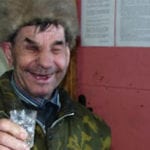 Weird Stuff
Weird Stuff  Weird Stuff
Weird Stuff  Mysteries
Mysteries 10 Tragic Disappearances and Deaths in Joshua Tree National Park
 History
History 10 Ways Childhood Really Sucked in the Old West
 Music
Music 10 Name Origins of Famous Bands from the 1990s
 Religion
Religion 10 Biggest Turnarounds by the Catholic Church
 Weird Stuff
Weird Stuff 10 Unbelievable Times Laws Had Unintended Consequences
 Humans
Humans Ten Historic Women Who Deserve Way More Credit Than They Got
 Movies and TV
Movies and TV 10 Films That Spawned Major Lawsuits
 History
History Ten Times Towns Were Wiped Off the Face of the Earth
 Creepy
Creepy 10 of the Most Disturbingly Haunted Public Houses in the UK
 Weird Stuff
Weird Stuff 10 Niche Subcultures That Are More Popular Than You Might Think
 Mysteries
Mysteries 10 Tragic Disappearances and Deaths in Joshua Tree National Park
 History
History 10 Ways Childhood Really Sucked in the Old West
Who's Behind Listverse?

Jamie Frater
Head Editor
Jamie founded Listverse due to an insatiable desire to share fascinating, obscure, and bizarre facts. He has been a guest speaker on numerous national radio and television stations and is a five time published author.
More About Us Music
Music 10 Name Origins of Famous Bands from the 1990s
 Religion
Religion 10 Biggest Turnarounds by the Catholic Church
 Weird Stuff
Weird Stuff 10 Unbelievable Times Laws Had Unintended Consequences
 Humans
Humans Ten Historic Women Who Deserve Way More Credit Than They Got
 Movies and TV
Movies and TV 10 Films That Spawned Major Lawsuits
 History
History Ten Times Towns Were Wiped Off the Face of the Earth
 Creepy
Creepy 10 of the Most Disturbingly Haunted Public Houses in the UK
Top 10 Fascinating Facts About Laos
Laos is an interesting place packed with rain forests, king cobras that are 4 meters (14 ft) long, stunning natural beauty, and relics of ancient civilizations. Those things are interesting, but we’re here for the weird stuff. Welcome to Laos, enjoy your stay, and don’t forget to tip your policeman.
10 The Children Of CIA-Trained Operatives Still Fight The Government
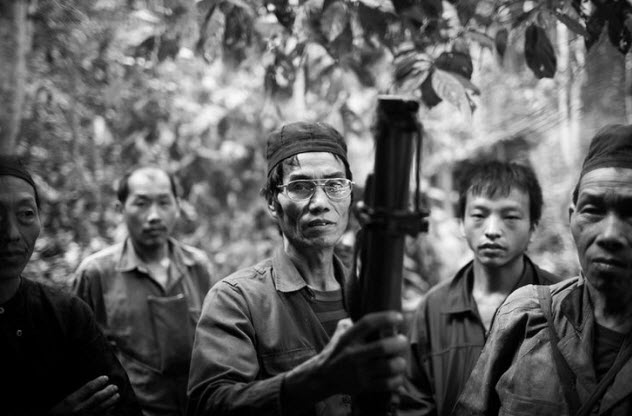
Imagine what it must be like for the descendants of the Hmong fighters who took part in the Vietnam War. Your grandparents were trained by the CIA to kill communists, so your whole family has been on the run, hiding in the jungle, and conducting guerrilla campaigns. For 45 years.
It would be nice to maybe stop being a combatant in a war that your Gramps got drafted into, but coming out of the jungle has dangers. “Just some month ago, we reported cases where two small groups of women and children came out of hiding, the women and girls were gang-raped by the soldiers, children as young as nine years old were raped until death,” said Chue Chou Tchang, the president of Hmong American Mutual Assistance Association.[1]
It must be a strange thing to know that the US guaranteed asylum to those who helped them during the war, and yet there you are—starving in the jungle, being hunted by the army, and with no way to escape.
After Vietnam, 300,000 ethnic Hmong fled to Thailand and 145,000 eventually were settled in the US. Ironically, after arming people against the communists in the first place, it was US Intelligence that thwarted a coup by the Hmong in Laos in 2007.
According to charges filed in federal court, nine ethnic Hmong and one retired lieutenant colonel from the California National Guard planned to train a militia, equip them with $9.8 million worth of weapons, smuggle them into Laos through Thailand, attack key government installations, and seat themselves as the new ruling regime.
9 The World’s Most Bombed Country
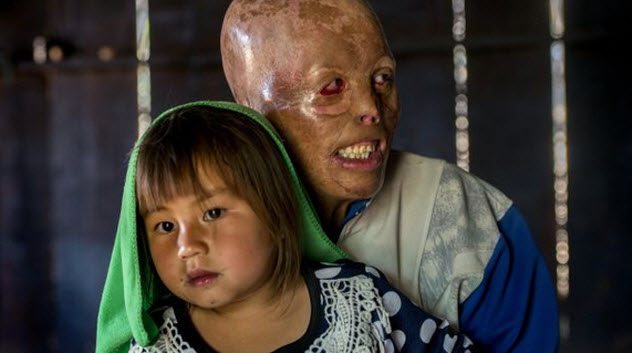
During Vietnam, the US dropped 270 million bombs on Laos. Thirty percent of them didn’t explode. In tonnage, there was more ordnance dropped on Laos than in Europe during the entirety of World War II. Today, hundreds of Laotians are maimed or killed by previously unexploded bombs—one-third of these victims either lose a limb or eyesight. In a developing country dependent on manual labor, the effect is devastating.[2]
When 35 percent of the entire nation is contaminated with unexploded ordnance and everyone depends on working the land, it is little wonder that Laos is so poor. The secret war ended decades ago, but cluster bombs, grenades, and mortars from the past make the Ho Chi Minh trail a deadly place to live.
8 One Of The Last Communist States Dependent On Capitalist Aid

The economy of Laos has grown at a yearly rate of 6–7 percent since 1986 when the communist government loosened central economic control and allowed private enterprise. However, the nation is still largely dependent on foreign aid.
In the mid-1990s, President Nouhak Phoumsavan, an elderly disciple of Ho Chi Minh himself and a staunch Marxist-Leninist, was still committed to moving the nation toward true communism. At the time, critics in the party said:
We were a little dogmatic in the past and made a mistaken analysis . . . Laos is not yet ready for communism or capitalism. First, we must reach the point where we can opt for one or the other. We must be a little realistic. The subsistence economy is the obstacle.
Even though conditions are improving, this position is still hard to dispute. In the 2016 United Nations Human Development Index, Laos remained near the bottom, ranking 138 out of 188 countries. Life expectancy at birth is a little over 66 years, which is up from 50 years as of the mid-1990s.
Of 1,000 children born in 2012, 71 are expected to die before age five. This is a reduction of 56 percent from the 1990 rate of 163 per 1,000 births. However, Laos still experiences more deaths under age five than its neighboring countries.[3] Malnutrition plays a large role in this unacceptably high death rate of young children.
7 Deforestation Is A Threat To The Future
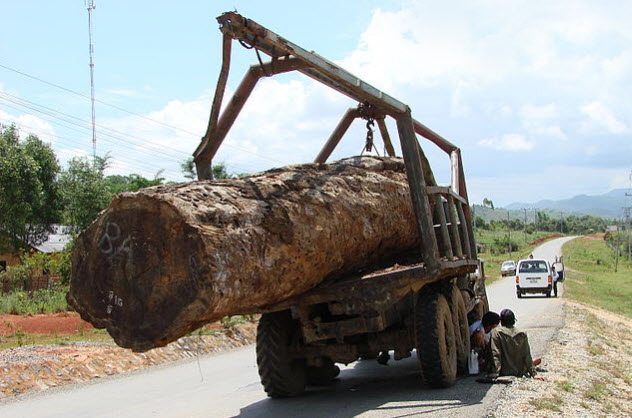
In 2005, 70 percent of Laos was covered in rain forest. Today, 40 percent remains. Still, Laos is the site of some of the world’s last remaining true wilderness.
A small population and relative isolation from the predation of mass capitalism due to the controlled economy have protected much of the more remote parts. However, the decentralization of forest management by the government directly contributes to the acceleration of woodland exploitation.[4]
An estimated 50 percent of the rain forest in Laos is primary forest, meaning that it is of indigenous species of trees and shows very little interference from mankind. As we move into a phase of life on Earth where resource conflict between nations is likely, we can hope that Laos avoids the worst.
6 In Laos, The Opium Of The Masses Is Just Opium

In Laos, smoking opium is punishable by 3–10 years in prison. Possession of less than a kilogram can bring a sentence of 2–7 years. Despite this, the law is regularly flouted. Cafes in notorious backpacker destination Vang Vieng—the town where “teenagers ruled the world” according to the New Zealand Herald—until quite recently openly advertised opium tea and joints as well as magic mushroom pizzas.
Of course, if you are caught by the police in downtown Vientiane, you’re going to be wanting a lawyer and a lot of luck. You’ll want the lawyer to fight the trumped-up charges, and you’ll want the luck so you see the lawyer at all before being shot.
In 2009, this was the case for a pregnant British woman, Samantha Orobator, who was accused of smuggling heroin.[5] It was nine months before she saw a lawyer, and she somehow became pregnant four months after being arrested. This eventuality saved her from the firing squad.
Still, life in a Laotian jail for moving drugs isn’t worth it.
5 Rat Jerky, Deep-Fried Grasshopper, Or Chicken Feet—Better Than Wendy’s
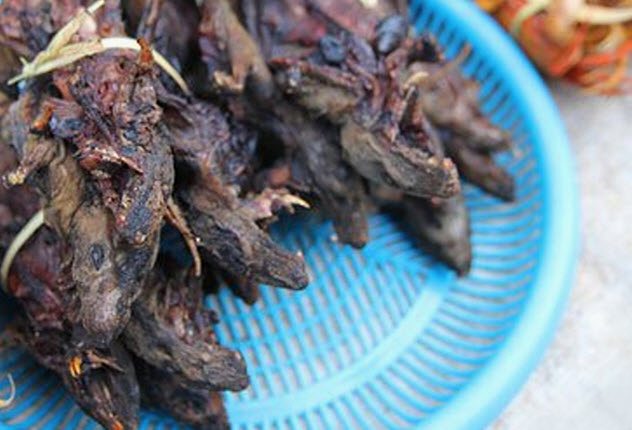
The cultural differences between West and East are often best described through the dinner plate. Cultural equivalence dictates that there are no wrong answers when it comes to satisfying taste buds. So if you are proud to partake of pecan pie, that’s fine.
On the other hand, you could be a little more open-minded and eat this jerky-style skin of rodent with a dipping sauce made of its own blood. Don’t be so squeamish. Embrace our differences. It’s the same as lasagna.[6]
4 A Lawless Party Town Is An Exercise In Darwinism
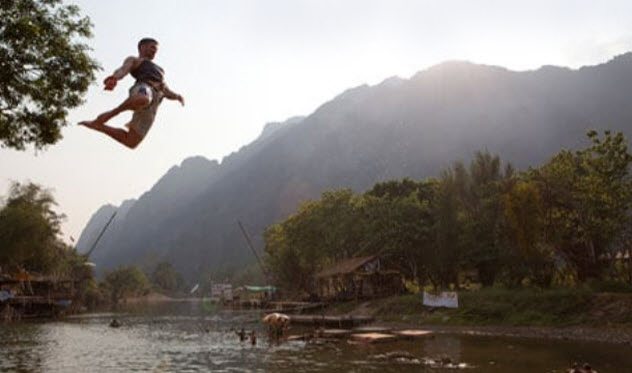
We mentioned Vang Vieng earlier as a tourist-oriented, drug-infested town. Although some steps have been made recently to reduce the number of dead tourists, the body count is still impressive. In 2011, 27 backpackers died at a site that is visited by 150,000 travelers every year.
Due to a perfect storm of cheap whiskey, psychedelics, opiates, youthful exuberance, and a disregard for warning signs, travelers have been getting fished out of the river with broken necks and lungs full of water for years.[7]
Every death is a tragedy. But now that people are wearing life jackets while they climb into truck inner tubes and ride the river, the death toll is expected to decrease. Then again, if you’re too stupid to read a sign saying, “Do not jump; you will die,” you don’t deserve to breed.
3 Sapphires And Corruption And Dead Lawyers, Oh My

Everyone loves a good shaggy dog story. The one told here[8] is particularly great and true—a tale of sapphire deals and murder.
Back in the 1990s, an Aussie SAS veteran, an American raconteur, and a crooked lawyer formed an unlikely partnership to launder $20 million through the purchase of Laotian sapphires.
After running a savage burn across two countries, the lawyer ended up mysteriously dead in a hotel in Phnom Penh. He had not been robbed of anything except his laptop, which contained all the access codes to millions of dollars in cleaned money. Who ended up with the loot is anyone’s guess.
In the “Golden Triangle” of heroin production, there are some of the finest silver jewelry smiths in the world. A relatively unexploited supply of sapphires also awaits—for anyone who stays alive long enough to get them out of the country.
2 The Plain Of Jars
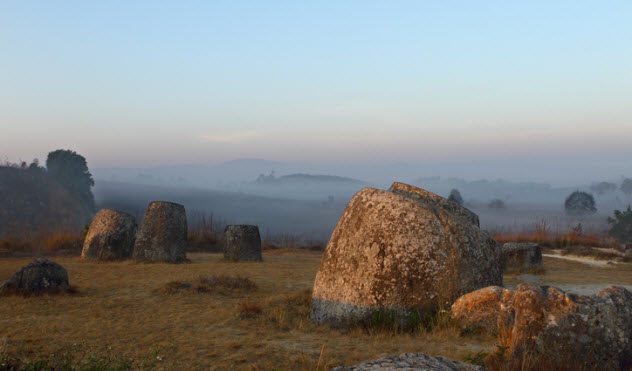
According to some people, the stone vessels in Laos’ famous Plain of Jars were created to brew potent rice wine to celebrate the victory of a band of mythical giants over their enemies. Others say that the jars held whiskey for a thirsty giant who lived in the mountains above Phonsavan. The jars might also be repositories for the ashes of cremated royalty. No one knows for sure.
We do know that, 2500 years ago, the civilization in the area really liked big jars. So they baked hundreds of them, up to 3 meters (10 ft) tall and 1 meter (3 ft) across, and placed them in the fields.[9]
Covering a huge area, many of the sites coincide with the aforementioned bomb zones and are inaccessible to visitors. Whatever the reason these ancient peoples had, we are left with only trace evidence of their lives and can only guess as to the purpose of the jars.
1 Corruption Is De Rigueur
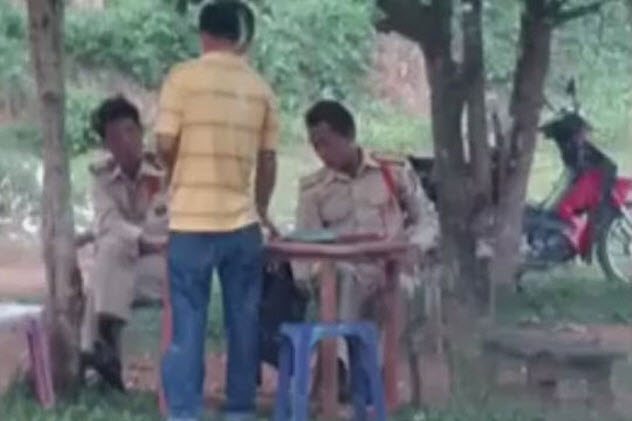
In September 2014, Laos Prime Minister Thongsing Thammavong signed Decree No. 327 into law, banning online criticism of the government and the ruling communist party and ratifying penalties for citizens who violated government controls.
As a result, exposing the corruption that is part of everyday life in Laos is now illegal. So even if your brother is detained illegally by corrupt cops, it’s against the law for you to do anything about it.
This was discovered by 26-year-old Phout Mitane, who lived in Nabouam village and took photographs as police impounded her brother’s truck on documentation charges.[10] She was taken into custody without being arrested after the photographs surfaced on Facebook. While it is common to bribe the police, the advances in technology have made it possible for Laotians to criticize this behavior online and en masse.
In Laos, it is illegal to disseminate content that encourages terrorism and social disorder or that could “divide the solidarity among ethnic groups and between countries.” In layman’s terms, the state knows about the corruption but it doesn’t want you to do anything about it.
Read more fascinating facts about other countries on 10 Fascinating Facts About Guatemala and Top 10 Fascinating Facts About Turkey.





